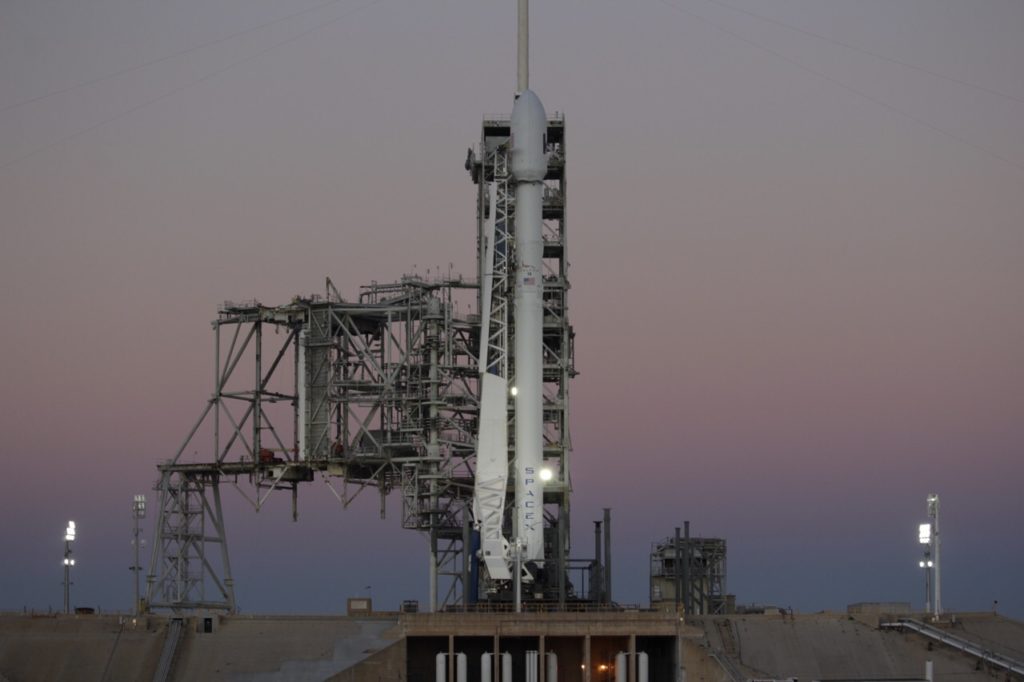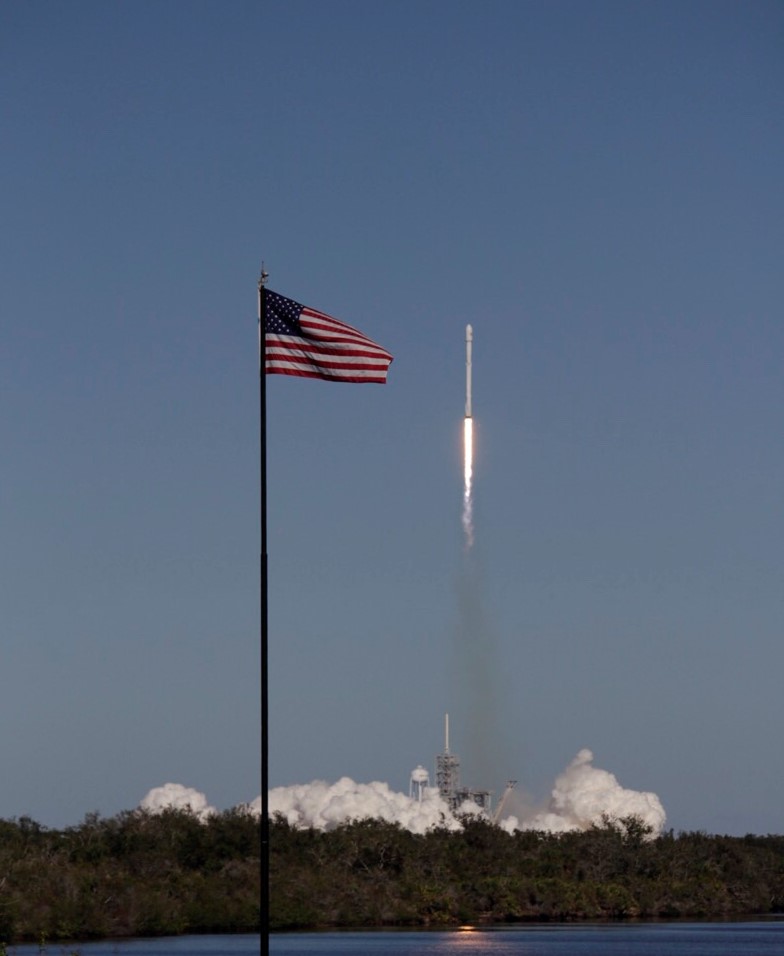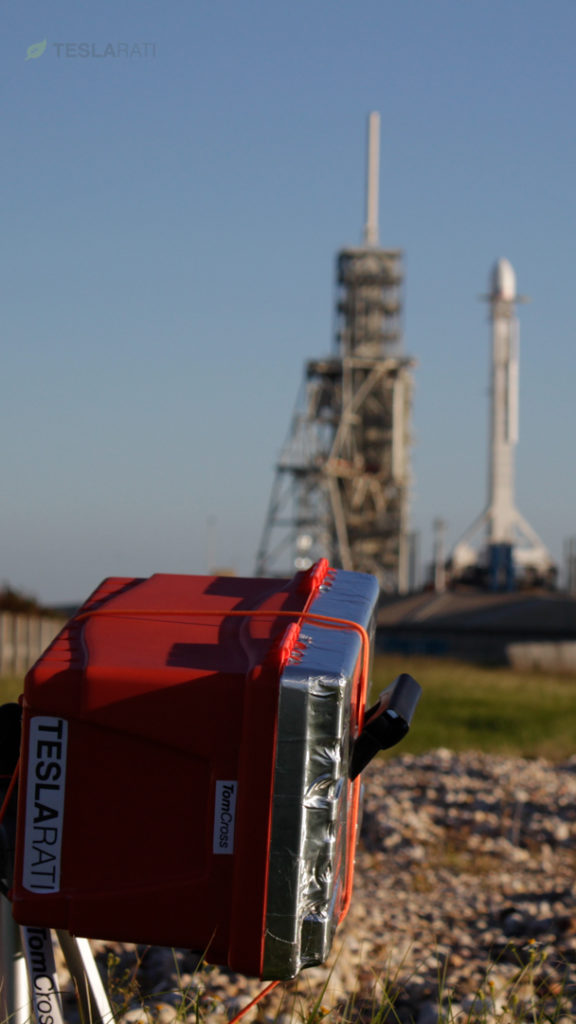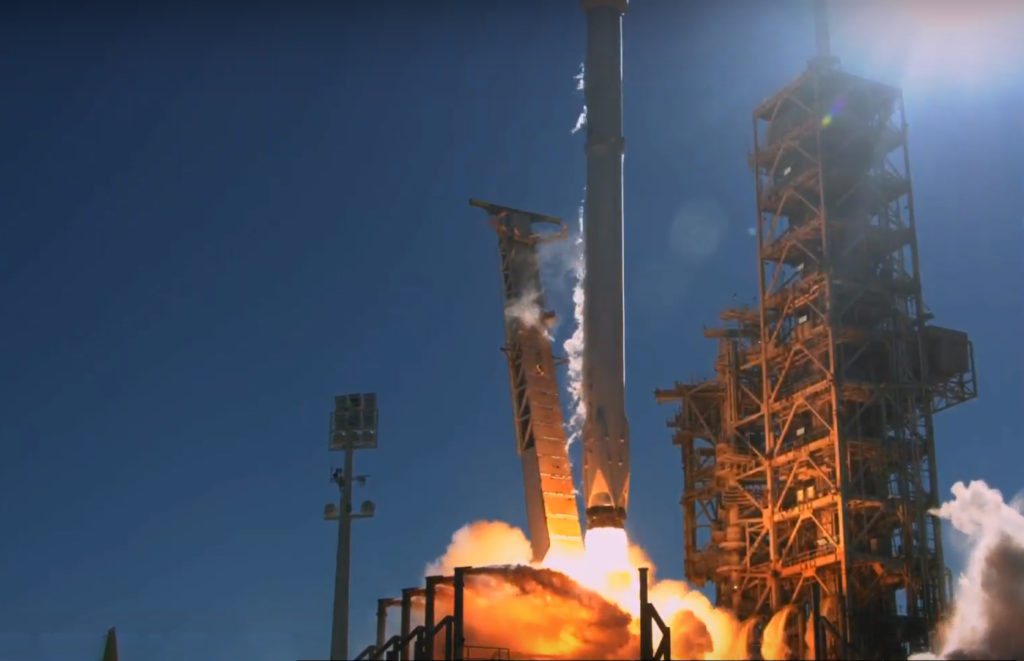
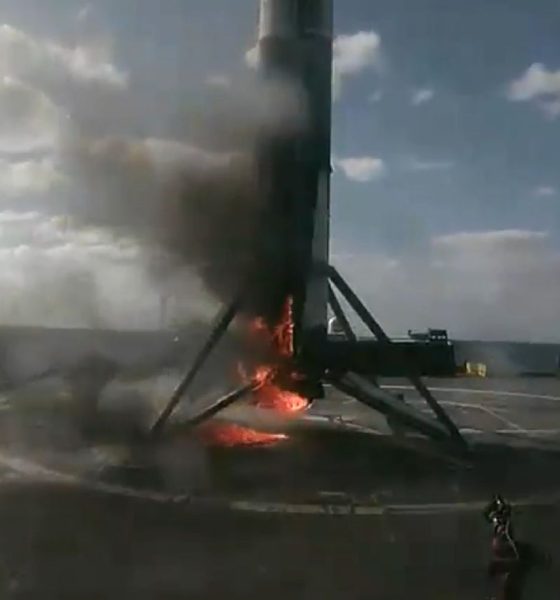
News
SpaceX Falcon 9 briefly incinerates itself after another successful mission
SpaceX completes 16th launch of 2017, aims for at least 19 before year’s end
Following the successful separation of Koreasat 5A from SpaceX’s Falcon 9 second stage, the rocket company has completed its 16th flawless mission of 2017. Several launches still remain in the 2017 manifest, leaving SpaceX with as many as 20 successful launches this year if all goes as planned, and this bodes well for SpaceX’s 2018 goal of 30 or more missions.
- Talented photographer Tom Cross documented the launch in person for Teslarati and produced some gorgeous shots. (Tom Cross/Teslarati)
- Plenty more to come! (Tom Cross/Teslarati)
Currently coasting in a comfortable geostationary transfer orbit after a wild ride aboard Falcon 9, the launch of Koreasat 5A exemplifies SpaceX’s ever-maturing expertise and comfort with rapid and routine launches and booster recoveries. Falcon 9 is also clearly maturing as a launch system, and has not suffered launch scrubs since the launch of Intelsat 35e in early July. Following first stage separation, Falcon 9 1042 made its way back to Earth and landed aboard Of Course I Still Love You, stationed approximately 350 miles off the East coast of Florida. This marks the 19th successful landing of a Falcon 9 first stage.
Despite suffering some apparently significant fire damage after the recovery of SES-11’s Falcon 9 earlier this month, OCISLY was repaired and sent back into action, performing admirably during its recovery of Koreasat 5A’s Falcon 9 core 1042. The booster may be less than thrilled, as it was captured on camera catching fire just after landing, potentially prematurely removing the possibility of future re-flights if the damage is too severe. SpaceX’s Falcon 9 is effectively a controlled explosion powered by liquid oxidizer and refined kerosene, and boosters cant exactly be faulted for incinerating themselves and their surroundings every once and awhile, although SpaceX almost certainly strives to prevent major fires as much as possible.
- What a beautiful day for a rocket landing! (SpaceX)
- 1042’s propellant purge became increasingly toasty… (SpaceX)
- And the booster finally got some respite from the fire, thanks to OCISLY’s water gun. (SpaceX)
- Talented photographer Tom Cross documented the launch in person for Teslarati and produced some gorgeous shots. (Tom Cross/Teslarati)
SpaceX’s largest customers buy into reusability
On top of another successful mission, the last week was accompanied by a flurry of revelations regarding SpaceX’s near-term plans. Earlier today, NASASpaceflight.com revealed information it was provided indicating that NASA has cleared Cargo Dragon missions for launch aboard recovered SpaceX rockets. This is an immensely important achievement that cannot be understated. NASA is SpaceX’s largest and most valuable customer, and SpaceX conducts an array of launches each year for the agency’s Commercial Resupply Services program.
While we wait for official confirmation from NASA itself, we can now look forward to at least two more Falcon 9 reuses in the final two months of 2017, both scheduled for launches in December. CRS-13, aiming for an early December launch, is now expected to use the same Falcon 9 booster that launched CRS-11 in June 2017. On the West coast, Iridium has also agreed to launch several NEXT missions aboard reused Falcon 9s, with the NEXT-4 mission now scheduled to launch from Vandenberg Air Force Base aboard the booster that helped lift the Iridium NEXT-2 payload in June 2017.
All things considered, this is an extraordinary accomplishment. In the first year of commercial reuse, SpaceX has already accomplished three successful missions aboard reused hardware, and is likely to make that five missions before the year is out. There is also a small chance that Falcon Heavy will launch later this year, itself composed of two refurbished boosters and one new booster. The future is looking undeniably bright for SpaceX’s program of rocket reusability.

News
Tesla starts showing how FSD will change lives in Europe
Local officials tested the system on narrow country roads and were impressed by FSD’s smooth, human-like driving, with some calling the service a game-changer for everyday life in areas that are far from urban centers.

Tesla has launched Europe’s first public shuttle service using Full Self-Driving (Supervised) in the rural Eifelkreis Bitburg-Prüm region of Germany, demonstrating how the technology can restore independence and mobility for people who struggle with limited transport options.
Local officials tested the system on narrow country roads and were impressed by FSD’s smooth, human-like driving, with some calling the service a game-changer for everyday life in areas that are far from urban centers.
Officials see real impact on rural residents
Arzfeld Mayor Johannes Kuhl and District Administrator Andreas Kruppert personally tested the Tesla shuttle service. This allowed them to see just how well FSD navigated winding lanes and rural roads confidently. Kruppert said, “Autonomous driving sounds like science fiction to many, but we simply see here that it works totally well in rural regions too.” Kuhl, for his part, also noted that FSD “feels like a very experienced driver.”
The pilot complements the area’s “Citizen Bus” program, which provides on-demand rides for elderly residents who can no longer drive themselves. Tesla Europe shared a video of a demonstration of the service, highlighting how FSD gives people their freedom back, even in places where public transport is not as prevalent.
What the Ministry for Economic Affairs and Transport says
Rhineland-Palatinate’s Minister Daniela Schmitt supported the project, praising the collaboration that made this “first of its kind in Europe” possible. As per the ministry, the rural rollout for the service shows FSD’s potential beyond major cities, and it delivers tangible benefits like grocery runs, doctor visits, and social connections for isolated residents.
“Reliable and flexible mobility is especially vital in rural areas. With the launch of a shuttle service using self-driving vehicles (FSD supervised) by Tesla in the Eifelkreis Bitburg-Prüm, an innovative pilot project is now getting underway that complements local community bus services. It is the first project of its kind in Europe.
“The result is a real gain for rural mobility: greater accessibility, more flexibility and tangible benefits for everyday life. A strong signal for innovation, cooperation and future-oriented mobility beyond urban centers,” the ministry wrote in a LinkedIn post.
News
Tesla China quietly posts Robotaxi-related job listing
Tesla China is currently seeking a Low Voltage Electrical Engineer to work on circuit board design for the company’s autonomous vehicles.

Tesla has posted a new job listing in Shanghai explicitly tied to its Robotaxi program, fueling speculation that the company is preparing to launch its dedicated autonomous ride-hailing service in China.
As noted in the listing, Tesla China is currently seeking a Low Voltage Electrical Engineer to work on circuit board design for the company’s autonomous vehicles.
Robotaxi-specific role
The listing, which was shared on social media platform X by industry watcher @tslaming, suggested that Tesla China is looking to fill the role urgently. The job listing itself specifically mentions that the person hired for the role will be working on the Low Voltage Hardware team, which would design the circuit boards that would serve as the nervous system of the Robotaxi.
Key tasks for the role, as indicated in the job listing, include collaboration with PCB layout, firmware, mechanical, program management, and validation teams, among other responsibilities. The role is based in Shanghai.
China Robotaxi launch
China represents a massive potential market for robotaxis, with its dense urban centers and supportive policies in select cities. Tesla has limited permission to roll out FSD in the country, though despite this, its vehicles have been hailed as among the best in the market when it comes to autonomous features. So far, at least, it appears that China supports Tesla’s FSD and Robotaxi rollout.
This was hinted at in November, when Tesla brought the Cybercab to the 8th China International Import Expo (CIIE) in Shanghai, marking the first time that the autonomous two-seater was brought to the Asia-Pacific region. The vehicle, despite not having a release date in China, received a significant amount of interest among the event’s attendees.
Elon Musk
Elon Musk and Tesla AI Director share insights after empty driver seat Robotaxi rides
The executives’ unoccupied tests hint at the rapid progress of Tesla’s unsupervised Robotaxi efforts.

Tesla CEO Elon Musk and AI Director Ashok Elluswamy celebrated Christmas Eve by sharing personal experiences with Robotaxi vehicles that had no safety monitor or occupant in the driver’s seat. Musk described the system’s “perfect driving” around Austin, while Elluswamy posted video from the back seat, calling it “an amazing experience.”
The executives’ unoccupied tests hint at the rapid progress of Tesla’s unsupervised Robotaxi efforts.
Elon and Ashok’s firsthand Robotaxi insights
Prior to Musk and the Tesla AI Director’s posts, sightings of unmanned Teslas navigating public roads were widely shared on social media. One such vehicle was spotted in Austin, Texas, which Elon Musk acknowleged by stating that “Testing is underway with no occupants in the car.”
Based on his Christmas Eve post, Musk seemed to have tested an unmanned Tesla himself. “A Tesla with no safety monitor in the car and me sitting in the passenger seat took me all around Austin on Sunday with perfect driving,” Musk wrote in his post.
Elluswamy responded with a 2-minute video showing himself in the rear of an unmanned Tesla. The video featured the vehicle’s empty front seats, as well as its smooth handling through real-world traffic. He captioned his video with the words, “It’s an amazing experience!”
Towards Unsupervised operations
During an xAI Hackathon earlier this month, Elon Musk mentioned that Tesla owed be removing Safety Monitors from its Robotaxis in Austin in just three weeks. “Unsupervised is pretty much solved at this point. So there will be Tesla Robotaxis operating in Austin with no one in them. Not even anyone in the passenger seat in about three weeks,” he said. Musk echoed similar estimates at the 2025 Annual Shareholder Meeting and the Q3 2025 earnings call.
Considering the insights that were posted Musk and Elluswamy, it does appear that Tesla is working hard towards operating its Robotaxis with no safety monitors. This is quite impressive considering that the service was launched just earlier this year.
